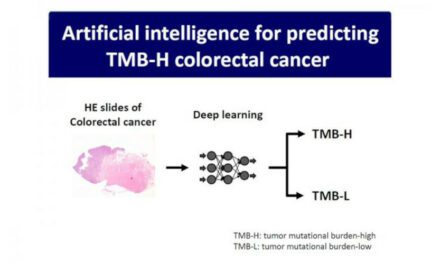A new study comparing the incremental cost effectiveness of four colorectal cancer screening alternatives found that annual screening with Epi proColon from Epigenomics, Berlin, was more cost effective than one particular test in all five modeling scenarios analyzed. The study, published by the NCI-sponsored cancer intervention and surveillance modeling network (CISNET) in the Journal of the National Cancer Institute, compared the incremental cost effectiveness of CRC testing alternatives CTC, PillCam, mtSDNA (Cologuard), and mSEPT9 (Epi proColon).1 Annual screening with Epi proColon had an incremental cost-effectiveness ratio (ICER) of $63,253 per quality adjusted life years gained (QALYG). Other efficient strategies were CTC screening every 5 years (ICER: $1,092 per QALYG) and annual (but not every three years) mtSDNA screening (ICER: $214,974 per QALYG), which were not optimal given the willingness-to-pay threshold ($100,000 per QALYG). “CISNET microsimulation models are the gold standard by which the American Cancer Society, United States Preventative Services Task Force (USPSTF), and other clinical societies base their guideline recommendations for CRC screening,” says Jorge Garces, president and CSO of Epigenomics AG. “This study supports the findings from another recent study published in Cancer Medicine and adds to the mounting evidence indicating that Epi proColon administered annually can reduce the incidence and mortality of colorectal cancer as effectively or better than other approved methods and most importantly highlights the opportunity for the Epi proColon blood test to serve as the test of choice for those currently resistant to colonoscopy and stool-based screening methods.” According to the study, under the primary base case analysis, annual mSEPT9 screening resulted in more QALYG, colorectal cancer (CRC) cases averted, and CRC deaths averted than both annual FIT screening and Cologuard every three years, albeit at a higher colonoscopy referral rate. The JNCI paper analyzed the clinical effectiveness and performance of various screening strategies under five different scenarios:
- Screening from age 50 through 75 years in an average-risk population, with perfect adherence to screening, diagnostic follow-up, and surveillance recommendations.
- Assuming screening from age 45 to age 75 with outcomes presented per 1,000 45-year-olds at 100% adherence.
- Using the model version that was used to inform the 2016 USPSTF screening guidelines, in which screening starts at 50 years of age and does not account for the increasing incidence. 100% adherence assumed.
- Assuming that 90% of the people that participated in a previous round would participate in a subsequent round, and 15% of the people that did not participate in the previous round would participate in the subsequent round. An 80% adherence to diagnostic follow-up and surveillance was assumed.
- Assuming 12% of advanced adenomas and 18% of colorectal cancers are systematically missed by the mSEPT9.
Under all scenarios examined, annual Epi proColon was shown to be more cost effective than Cologuard. The authors also conclude that, ultimately, the best CRC screening alternative test is the “one that gets done.” As the JNCI authors clearly state, “A well-established microsimulation model demonstrates that for people who are unwilling to be screened with FIT or colonoscopy, annual screening with the mSEPT9 is the test of choice given its cost-effectiveness profile compared to CTC, PillCam, and mtSDNA.” For more information, visit Epigenomics. Reference
- Peterse EFP, Meester RGS, de Jonge L, et al. Comparing the cost-effectiveness of innovative colorectal cancer screening tests. Epub. August 6, 2020. J Natl Cancer Inst. doi: 1093/jnci/djaa103.
Featured image:
Scanning electron micrograph of colon cancer cells. (Photo by Gopal Murti, PhD).





